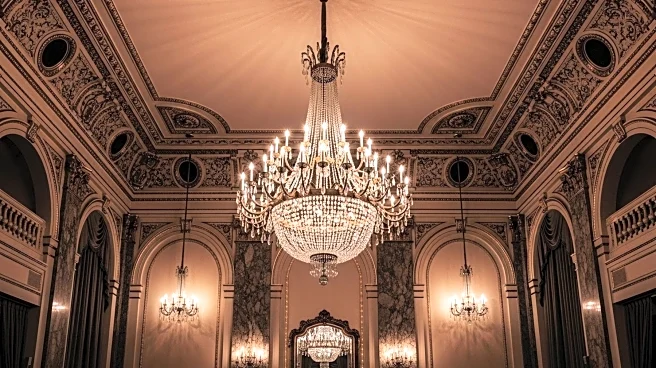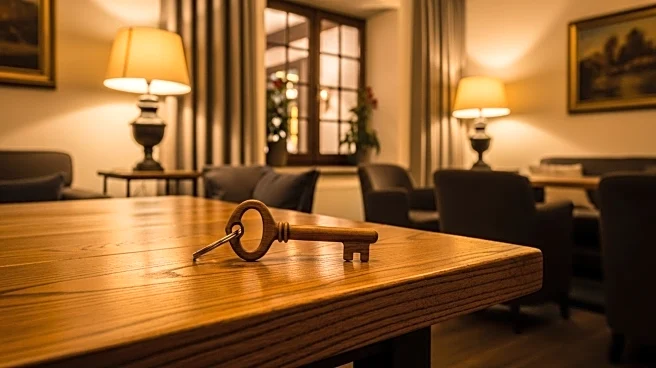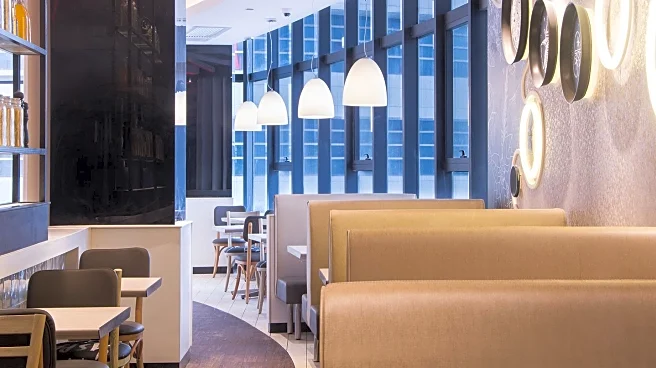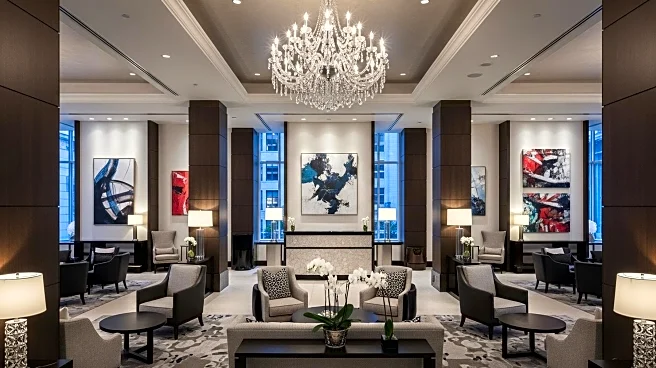What's Happening?
The Waldorf Astoria New York has reopened its Grand Ballroom and other iconic event spaces following a comprehensive restoration. The hotel, a fixture in New York society for over a century, has been revitalized to blend its historical Art Deco charm with modern amenities. The restoration was led by architects Skidmore, Owings & Merrill (SOM) and interior designer Pierre-Yves Rochon (PYR), ensuring the preservation of original details while incorporating state-of-the-art technology. The Grand Ballroom, capable of hosting up to 1,500 guests, now features advanced sound, lighting, and staging capabilities, making it suitable for a wide range of events. Other spaces, such as the Basildon Room and Silver Corridor, have also been meticulously restored, maintaining their historical significance while enhancing functionality.
Why It's Important?
The reopening of the Waldorf Astoria New York's event spaces marks a significant moment for Manhattan's cultural and social scene. As a historical venue that has hosted numerous prestigious events, including the first Tony Awards and Met Galas, the restoration reinforces the hotel's status as a premier location for high-profile gatherings. This development is likely to attract a diverse array of events, from corporate functions to social galas, boosting the local economy and tourism. The restoration also highlights the importance of preserving historical architecture while adapting to contemporary needs, setting a benchmark for other heritage properties.
What's Next?
With the restoration complete, the Waldorf Astoria New York is poised to host a variety of events, potentially drawing international attention and clientele. The hotel is expected to leverage its enhanced facilities to attract major events, further solidifying its reputation as a leading venue in New York City. Additionally, the integration of modern technology may open opportunities for innovative event formats, including virtual and hybrid gatherings. Stakeholders, including event planners and cultural organizations, are likely to explore collaborations with the hotel to utilize its unique spaces.
Beyond the Headlines
The restoration of the Waldorf Astoria New York not only revitalizes a historic venue but also reflects broader trends in the hospitality industry towards blending heritage with modernity. This approach may influence other historic hotels to undertake similar projects, balancing preservation with innovation. The hotel's commitment to maintaining its Art Deco legacy while embracing contemporary design could inspire architectural and cultural discussions on the importance of preserving historical aesthetics in modern urban environments.











